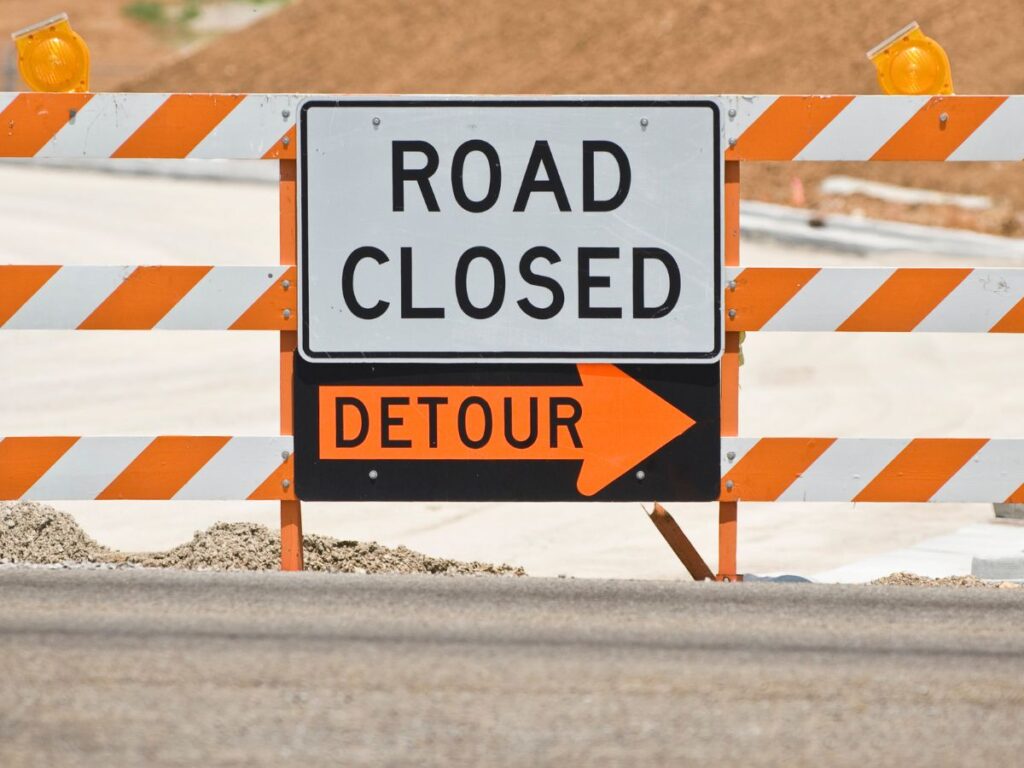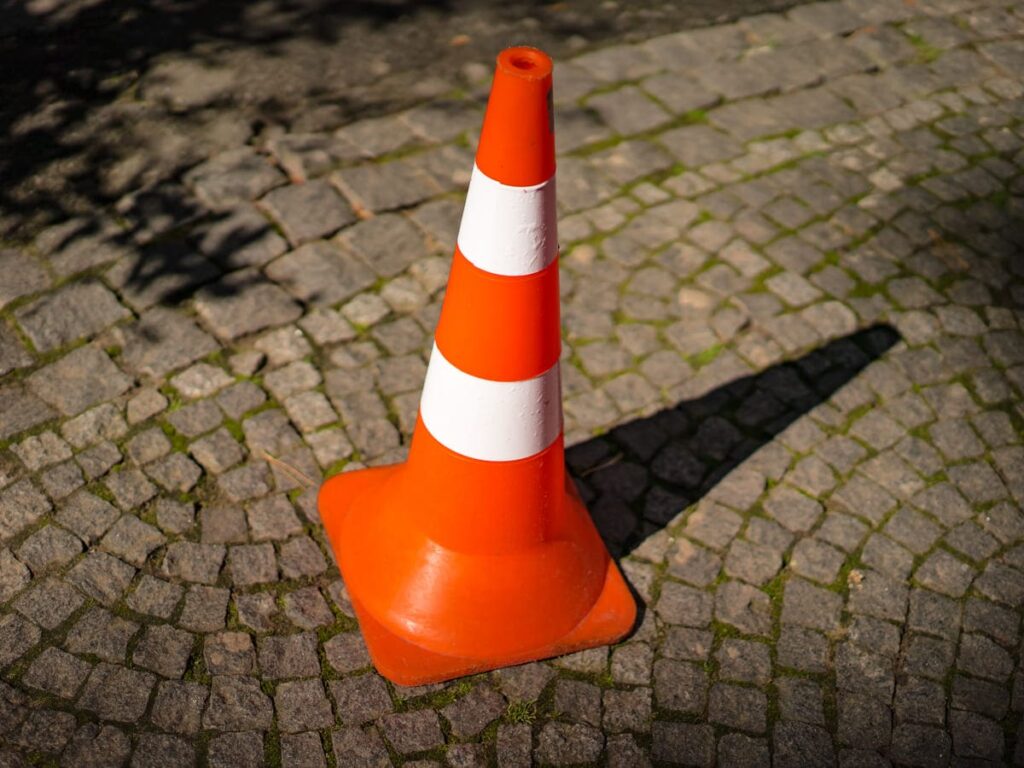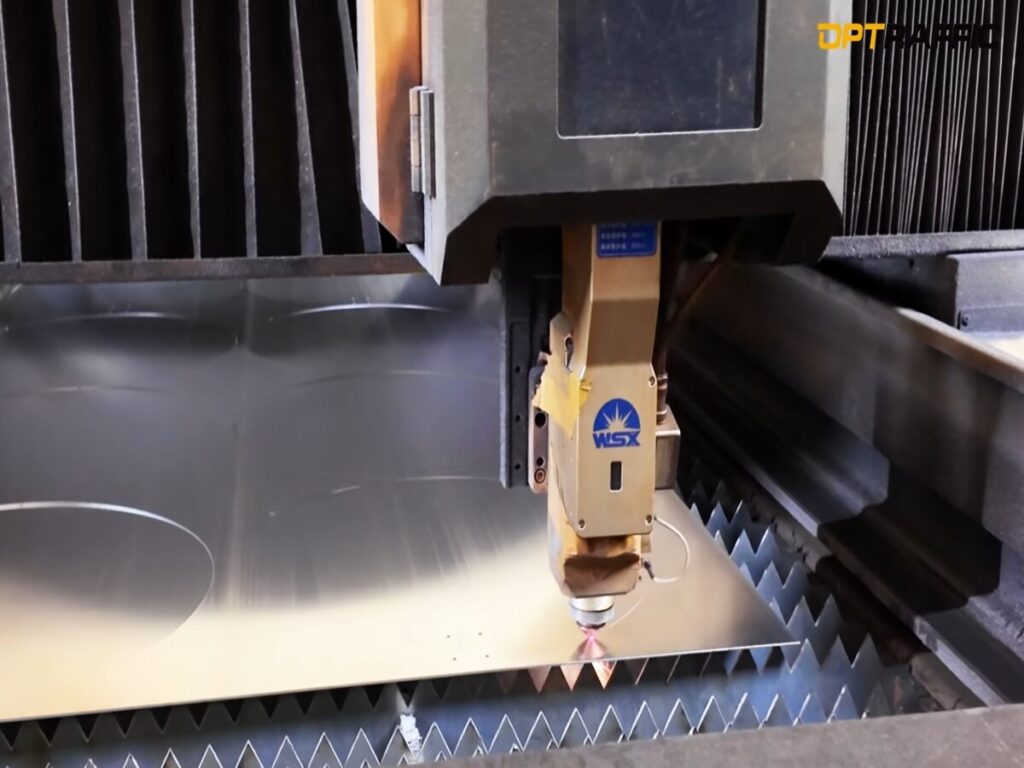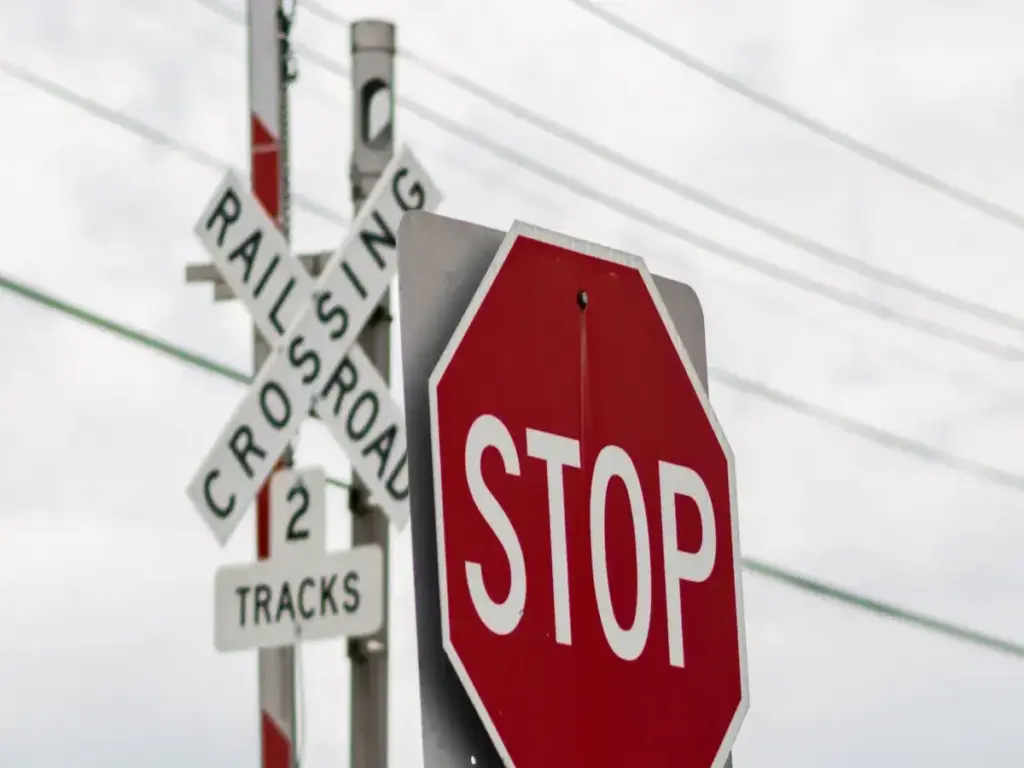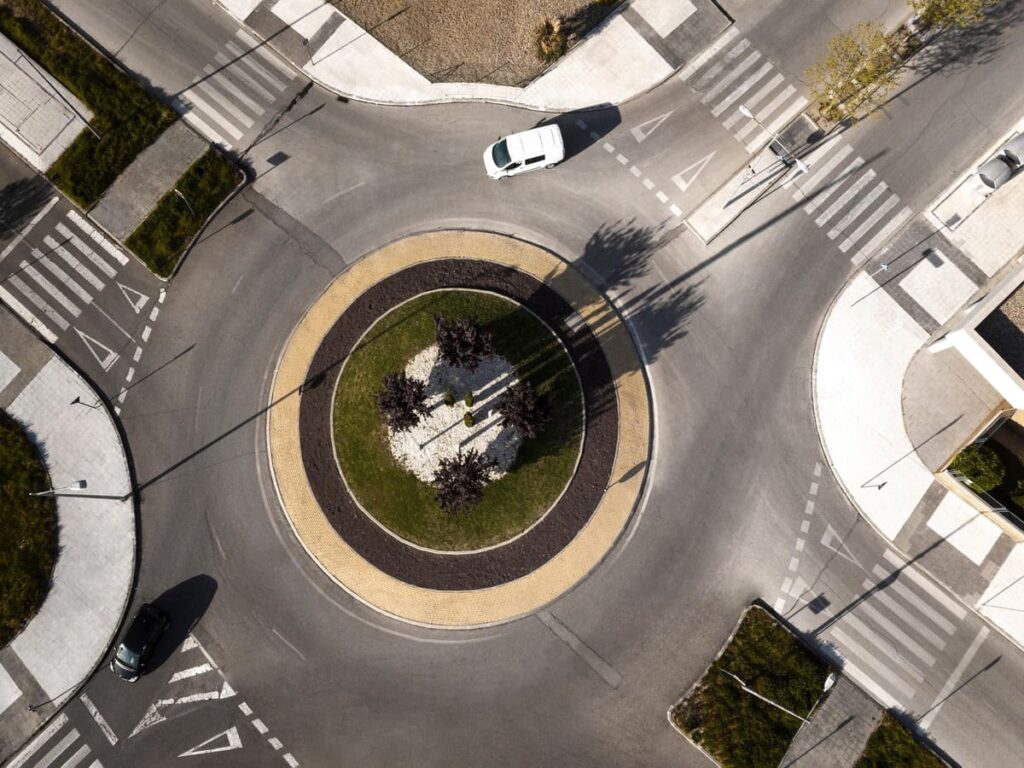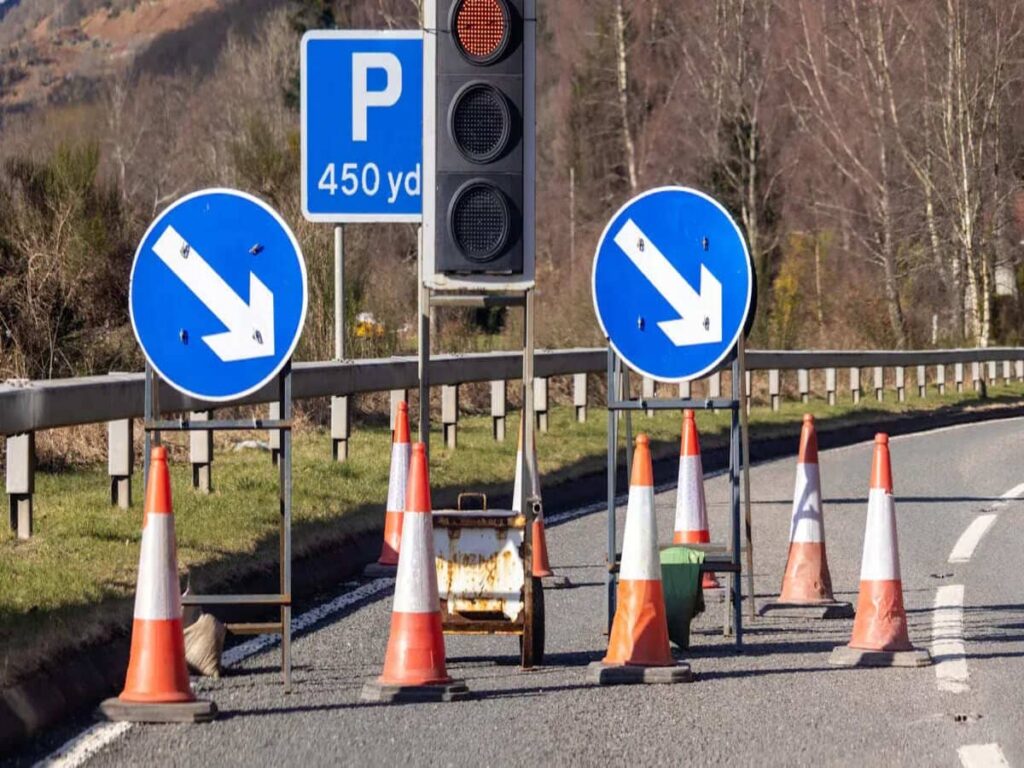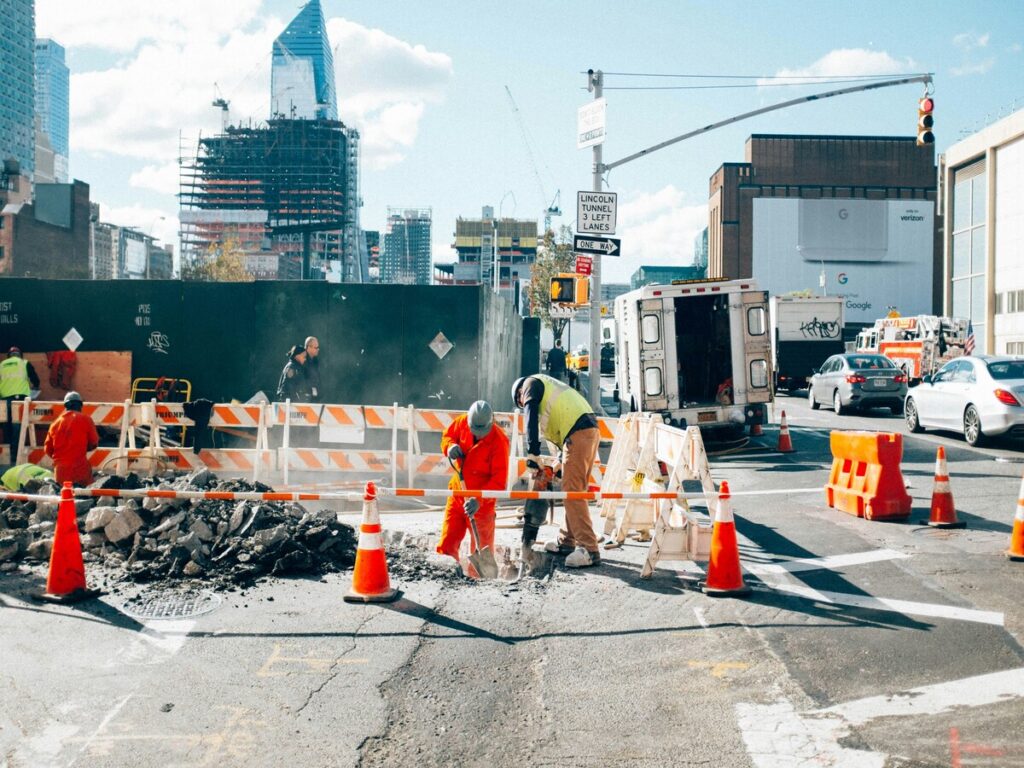
Muitas vezes você vê bandeiras de segurança em locais movimentados, onde as pessoas precisam de instruções claras. Estas bandeiras brilhantes ajudam você a ver os perigos, mostrar áreas seguras, ou guiar multidões facilmente. Você pode vê-los em canteiros de obras, em eventos públicos, ou próximo a estradas. Cores brilhantes tornam-nos fáceis de notar, para que você fique seguro e alerta em qualquer lugar.
Na OPTRAFFIC, oferecemos alta visibilidade bandeiras de segurança que são perfeitos para uma variedade de ambientes. Nossas bandeiras são projetadas para serem atraentes e eficazes, garantindo que você possa orientar as pessoas com segurança e clareza em qualquer situação. Explore hoje a nossa gama de soluções de sinalização de trânsito e segurança para manter o seu local ou evento seguro.
Takeaways -chave
- Bandeiras de segurança são feitas de material resistente, materiais brilhantes. Eles usam cores claras para alertar as pessoas sobre o perigo. As bandeiras também mostram onde é seguro ir.
- Cada cor da bandeira significa algo especial. Isso ajuda as pessoas a ver perigos e manter os trabalhadores ou o público seguro.
- Essas bandeiras são simples de colocar rapidamente. Você pode usá -los novamente, Então eles economizam dinheiro em muitos lugares.
- Se você colocar as bandeiras corretamente e verifique -as com frequência, Eles permanecem fáceis de ver. Seguir as regras de segurança fazem com que as bandeiras funcionem bem.
- Você pode adicionar logotipos ou mensagens às bandeiras. Isso ajuda as pessoas a entender melhor e atender às necessidades de segurança de cada lugar.
O que são bandeiras de segurança de segurança?
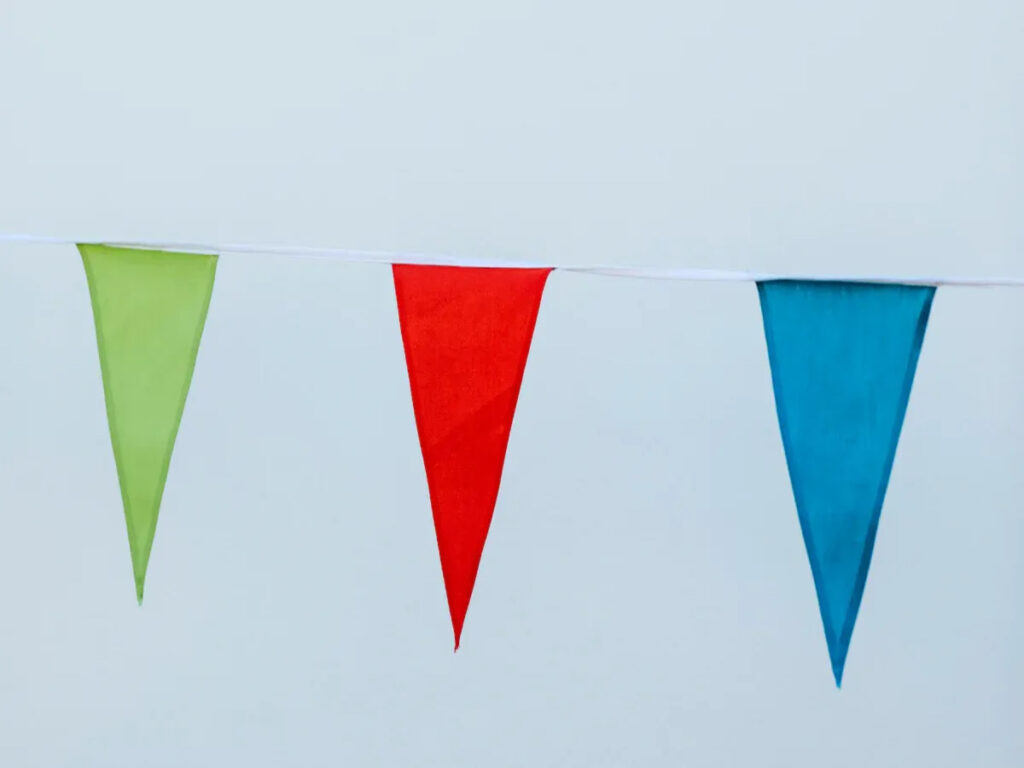
Design e materiais
Bandeiras de estamenha de segurança têm uma aparência especial. A maioria é feita de PVC laranja fluorescente. Este material é fácil de ver à luz solar ou à noite. As bandeiras geralmente são em forma de triângulo. Esta forma os ajuda a se mover ao vento e a ser notada. As bandeiras estão ligadas a cordas fortes de polipropileno. Essas cordas impedem as bandeiras de cair ou estalar.
Dica: Escolha bandeiras que são resistentes a UV e à prova d'água. Esses tipos duram mais, Mesmo com mau tempo.
Aqui está uma tabela com os principais recursos de design:
| Recurso | Descrição |
|---|---|
| Material | PVC reflexivo, Poliéster, e filme reflexivo |
| Forma e tamanho da bandeira | Tipicamente triangular, tamanho personalizável (comumente em torno 30 cm x 30 cm) |
| Material de corda | Corda de polipropileno de alta resistência |
| Tecnologia reflexiva | Filme refletivo microprismático ou de vidro |
| Opções de cores | Cores de alta visibilidade, como amarelo, vermelho, laranja, e cores personalizáveis |
| Recursos de durabilidade | Resistente a UV, impermeável, resistente a lágrimas, Materiais à prova de intempéries |
| Faixa de temperatura | -30° C a +70 ° C. |
| Padrões de conformidade | AS/NZS 1906.1 (Austrália), EM 20471 (Europa), Ansi 107 (América do Norte) |
| Estilo de anexo | Costurado, soldado, ou amarrado com segurança à corda |
Você pode colocar e derrubar essas bandeiras rapidamente. Eles são leves, Então você pode carregá -los e armazená -los facilmente. Alguns têm tiras reflexivas para ajudá -lo a vê -las à noite. Muitas bandeiras de segurança de segurança seguem as regras de segurança mundial. Você pode usá -los em locais de construção, para tráfego, ou em fábricas.
Tipos e cores
Existem muitos tipos e cores de bandeiras de estamenha de segurança. Cada cor significa algo diferente. A cor que você escolher pode mostrar um perigo ou marcar uma área. Bandeiras laranja fluorescentes são muito brilhantes. Eles ajudam você a ver o perigo de longe. Esta cor também corresponde às regras de segurança em muitos lugares.
Aqui está uma tabela que mostra o que cada cor significa:
| Cor | Significado / Uso da indústria |
|---|---|
| Vermelho | Linhas de energia elétrica, cabos, conduíte, ou cabos de iluminação |
| Amarelo | Linhas de gás natural, óleo, petróleo, vapor, ou gás inflamável |
| Laranja | Linhas de telecomunicações, TV a cabo, alarme ou linhas de sinal |
| Azul | Água potável |
| Verde | Linhas de esgoto e drenos |
| Branco | Rotas e limites de escavação propostos |
| Roxo | Irrigação, água recuperada, ou pasta |
| Rosa | Áreas de pesquisa temporárias |
Esses códigos de cores ajudam você a marcar perigos ou tubos. Isso facilita para todos conhecer os riscos. Cores brilhantes, como laranja fluorescente, são fáceis de ver em mau tempo. Isso ajuda a interromper acidentes e mantém seu site seguro.
- Cores brilhantes ajudam você a ver os perigos rapidamente.
- Materiais fortes mantêm as bandeiras fáceis de ver.
- Bandeiras reflexivas são mais seguras à noite.
Bunting vs Flags tradicionais
As bandeiras de estamenha de segurança não são as mesmas que as bandeiras tradicionais. Eles têm empregos e looks diferentes. Bandeiras de segurança de segurança alertam as pessoas sobre o perigo. Você os usa para marcar lugares arriscados ou guiar multidões. Bandeiras tradicionais representam países ou grupos. Eles são usados para decoração ou orgulho.
Aqui está uma tabela de comparação:
| Aspecto | Bandeiras de estamenha de segurança | Bandeiras e estamenha tradicionais |
|---|---|---|
| Função primária | Avisos visuais em locais perigosos para conformidade de segurança. | Identificação, representação, decoração, e promoção. |
| Foco de design | Cores brilhantes e mensagens de segurança para atenção imediata. | Simbolismo, orgulho, respeito, e apelo visual. |
| Material | Durável, Materiais impermeáveis como PVC e vinil. | Vários tecidos, frequentemente escolhido para aparência. |
| Personalização | Pode incluir logotipos da empresa e notas de segurança. | Designs padronizados, menos personalização. |
| Uso de cores | Cores específicas para mensagens de segurança. | Diversas cores para representação, não é a segurança. |
| Contexto de uso | Locais de construção, áreas industriais, zonas perigosas. | Eventos, celebrações, exibições patrióticas. |
| Prioridade da visibilidade | Alta visibilidade e comunicação de risco. | Simbolismo e apelo visual. |
São feitas bandeiras de segurança para manter as pessoas seguras. O olhar brilhante deles facilita a localização de longe de longe. Bandeiras tradicionais não usam cores especiais ou regras de segurança. Você os usa principalmente para shows ou festas.
Aplicações
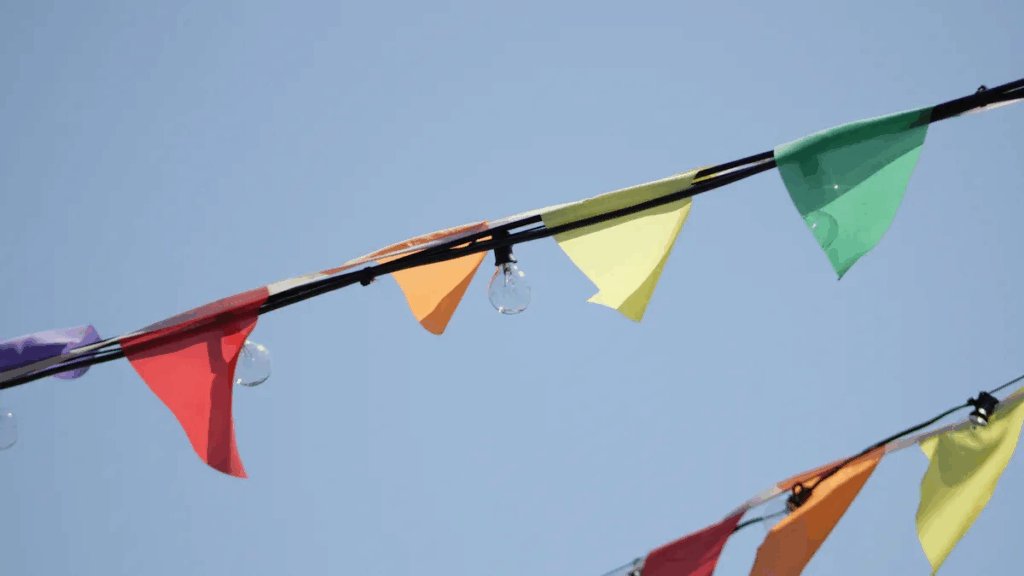
Bandeiras de estamenha de segurança Ajude a manter as pessoas seguras em muitos lugares. Você pode usá -los dentro ou fora. Eles funcionam por curtos tempos ou mais tempo. Suas cores brilhantes facilitam a ver. Os materiais fortes os ajudam a durar em qualquer lugar.
| Setor | Aplicações comuns de bandeiras de segurança | Principais recursos e materiais | Cores disponíveis |
|---|---|---|---|
| Construção | Zoneamento de zonas de trabalho e riscos potenciais, anexado a postes de poste/andaimes | Vinil pesado revestido, nylon; reutilizável; à prova de intempéries | Laranja, Azul, Amarelo, Verde |
| Eventos | Gerenciando grandes multidões, criando barreiras temporárias, Branding/Uso Promocional | Plástico ou vinil; Capas de barricada personalizáveis | Várias cores brilhantes |
| Segurança rodoviária | Aviso de motoristas/pedestres de riscos, Delinear o fluxo de tráfego | Vinil pesado revestido, Tiras reflexivas para visibilidade | Laranja, Vermelho, Branco, Azul, Amarelo |
| Zonas de emergência | Bandeiras de alta visibilidade com tiras reflexivas para condições de baixa luz | Nylon com revestimento de vinil pesado, tecido de poliéster fluorescente | Laranja fluorescente com tiras de amarelo-limão refletivo |
Locais de construção
Você vai ver bandeiras de segurança Na construção muito. Eles mostram para onde não é seguro ir. Você pode amarrá -los a cercas ou andaimes. As bandeiras ajudam os trabalhadores e visitantes a conhecer os perigos. Eles são à prova de intempéries, Então você pode usá -los lá fora por um longo tempo.
Eventos e controle de multidão
Em grandes eventos, você precisa guiar as pessoas com segurança. Bandeiras de estamenha de segurança Faça caminhos claros e bloqueie algumas áreas. Você pode usá -los para gerenciar linhas ou marcar pontos especiais. Suas cores brilhantes chamam a atenção das pessoas. Você pode escolher cores personalizadas para a marca também.
Uso de estrada e tráfego
Em estradas, bandeiras de segurança avisar motoristas e pessoas andando. Eles mostram onde estão os trabalhos de estrada ou guia carros em torno das coisas. Tiras reflexivas ajudam você a ver as bandeiras à noite ou na chuva. Você pode configurá -los rapidamente se a estrada mudar.
Zonas de emergência
Em emergências, você deve agir rápido. Bandeiras de estamenha de segurança ajudá -lo a marcar o perigo ou lugares seguros. Suas cores brilhantes e tiras reflexivas se destacam com pouca luz. Você pode usá -los dentro ou fora por qualquer tempo.
Observação: Bandeiras de estamenha de segurança são leves e fáceis de mover. Você pode colocá -los rapidamente e movê -los quando necessário. Isso os torna ótimos para lugares que mudam rapidamente.
Benefícios das bandeiras de segurança de estamenha
Visibilidade
É importante ter avisos claros em lugares movimentados. Bandeiras de estamenha de segurança Use cores brilhantes como laranja, amarelo, e vermelho. Essas cores são fáceis de ver à luz do sol, chuva, ou nevoeiro. Algumas bandeiras têm tiras reflexivas. As tiras ajudam você a ver as bandeiras à noite ou quando está escuro. Usar essas bandeiras ajuda todos a perceber os perigos rapidamente. Avisos rápidos podem parar acidentes e manter as pessoas seguras.
Dica: Escolha bandeiras com cores brilhantes e tiras reflexivas para obter os melhores resultados em qualquer clima.
Durabilidade
Você quer equipamento de segurança que dura muito tempo. Bandeiras de estamenha de segurança feitos de PVC são fortes e não rasgue facilmente. Eles não se desgastam rápido. Eles são à prova d'água e à prova de sol, Então as cores ficam brilhantes. Os padrões permanecem claros mesmo depois de muita chuva ou sol forte. Você pode confiar nessas bandeiras em mau tempo. Use -os em locais de construção, em eventos, ou para tráfego. Essas bandeiras duram mais do que outros marcadores de segurança.
Bandeiras feitas de diferentes materiais duram para diferentes momentos. Bandeiras de nylon duram mais do que o algodão. Bandeiras de poliéster, Como Tough-Tex®, durar o mais longo. Quanto tempo dura uma bandeira depende de como você usa e se importa. Se você cuidar de suas bandeiras, Você pode usá -los muitas vezes.
Configuração fácil
Você pode colocar bandeiras de segurança muito rapidamente. Basta desenrolar as bandeiras e amarrá -las a postagens ou postes. Você não precisa de ferramentas ou passos difíceis. Isso os torna ótimos quando você precisa agir rápido.
Aqui está uma tabela que mostra o quão rápido você pode configurar barreiras diferentes:
| Tipo de barreira | Descrição da configuração | Facilidade do indicador de configuração |
|---|---|---|
| Bandeiras de estamenha de segurança | Desenrole e use com postes para bloquear áreas inseguras rapidamente | Configuração rápida e fácil |
| Barreiras de controle de multidão | Link painéis juntos; Remova os pés; pode usar picos | Leva mais tempo, precisa de montagem |
| Trilhos de segurança modulares | Junte com seções; precisa de ferramentas e fixações | Mais difícil, precisa de ferramentas |
Você economiza tempo e esforço com bandeiras de segurança. Você pode movê -los ou armazená -los facilmente quando terminar.
Custo-efetividade
Você quer uma ferramenta de segurança que economize dinheiro com o tempo. Bandeiras de estamenha de segurança Dê um aviso claro a um preço baixo. Você pode escolher o tamanho, cor, e mensagem que você precisa. Os materiais fortes significam que você pode usar as bandeiras de novo e de novo. Isso significa que você não precisa comprar novos com frequência.
- Bandeiras de estamenha de segurança são fortes e duram muito tempo porque são feitos de PVC à prova d'água.
- Você pode usá -los novamente, Então você gasta menos em novas bandeiras.
- Fazer sinalizadores personalizados no site pode economizar dinheiro e tempo.
- Você pode adicionar logotipos ou mensagens por valor extra.
- Comparado a outros marcadores de segurança, Bandeiras de estamenha são flexíveis e economizam dinheiro com o tempo.
Observação: Quando você escolhe bandeiras de segurança, você obtém uma solução que funciona bem, dura muito, e se encaixa no seu orçamento.
Escolhendo e usando bandeiras de estamenha de segurança
Fatores de seleção
Você deve pensar em várias coisas antes de escolher bandeiras de estamenha para o seu site. Comece verificando o tamanho que você precisa. Grandes áreas precisam de cordas mais longas e mais bandeiras. Escolha materiais que correspondam ao seu ambiente. PVC e nylon funcionam bem ao ar livre porque resistem à água e ao sol. Escolha as cores que se destacam em sua configuração. Laranja brilhante ou amarelo é fácil de ver na maioria dos lugares. Se você precisar usar as bandeiras à noite, Procure por tiras reflexivas. Sempre verifique se suas bandeiras atendem aos padrões de segurança locais. Alguns sites precisam de sinalizadores que seguem regras como AS/NZS 1906.1 ou pt 20471.
Dica: Personalize suas bandeiras com logotipos da empresa ou mensagens especiais para uma clareza extra.
Dicas de instalação
A instalação adequada mantém suas bandeiras seguras e visíveis. Siga estas etapas para obter melhores resultados:
- Use postes de fibra de vidro telescópica não condutores com sinalização vermelha e branca para alta visibilidade e segurança.
- Pólos seguros com bases preenchidas a água ou bases de aço fixas para impedir que elas se inclinem.
- Verifique as diretrizes locais e os padrões de segurança antes de começar. Sempre meça a distância mínima segura das linhas de energia.
- Monte kits sem ferramentas usando grampos de manutenção de travamento para configuração rápida.
- Faça um loop da sinalização de um lado para o outro para torná -lo mais visível, Mas use uma trave telescópica se você esperar ventos fortes.
- Ancorar bem a sinalização para mantê -lo estável em mau tempo.
- Leia o guia do produto antes de começar a evitar erros.
Observação: Sempre ancore suas bandeiras a bases estáveis para evitar acidentes.
Manutenção e armazenamento
Cuidados regulares ajudam suas bandeiras a durar mais tempo. Siga estas rotinas:
- Inspecione cordas frequentemente para desgaste. Substitua qualquer que pareça desgastado ou fraco.
- Limpe bandeiras e bandeiras com sabão e sabão suave para remover sujeira e sujeira.
- Evite puxar cordas muito apertadas. Isso os impede de desgastar.
- Use cordas resistentes ao clima para uso ao ar livre.
- Ajuste as cordas de vez em quando para manter a tensão certa.
- Verifique os acessórios e o hardware duas vezes por ano. Aperte ou substitua todas as peças soltas ou enferrujadas.
- Bandeiras inferiores durante tempestades ou ventos fortes para reduzir os danos.
- Armazenar bandeiras em local seco quando não estiver em uso.
Dica: Peça ajuda a um profissional se você tiver bandeiras altas ou observe danos graves.
Regulamentos e práticas recomendadas
Padrões de segurança
Você deve seguir os padrões de segurança quando usar bandeiras de estamenha. Esses padrões ajudam você a manter todos em segurança. No Reino Unido, Você deve verificar se suas bandeiras se encontram EM 20471 Para produtos de alta visibilidade. Na Austrália, procurar AS/NZS 1906.1. A América do Norte usa Ansi 107. Essas regras definem as cores certas, refletividade, e durabilidade. Você deve sempre verificar as leis locais antes de começar a trabalhar. O uso de produtos aprovados ajuda a evitar multas e mantém seu site seguro.
| Padrão | Região | Área de foco |
|---|---|---|
| EM 20471 | Europa/Reino Unido | Roupas de alta visibilidade |
| AS/NZS 1906.1 | Austrália/NZ | Materiais Ratrorrefletivos |
| Ansi 107 | América do Norte | Segurança de alta visibilidade |
Dica: Sempre procure rótulos de certificação em suas bandeiras de estamenha.
Dicas de conformidade
Você pode seguir estas etapas para garantir que você use bandeiras de estamenha corretamente:
- Escolha a cor certa para cada risco. Por exemplo, Use laranja para trabalhar em andamento, vermelho para perigo, amarelo para cautela, e verde para esgoto ou trabalho de drenagem.
- Escolha bandeiras brilhantes e fáceis de ver. Isso ajuda as pessoas a identificar o perigo rapidamente.
- Personalize suas bandeiras com mensagens, Logos, ou marca. Isso deixa seus avisos claros e atende às suas necessidades de segurança.
- Selecione bandeiras feitas de fortes, Materiais impermeáveis. Estes duram mais tempo ao ar livre.
- Use bandeiras de mão ou bandeiras de corda da maneira certa. Bandeiras manuais ajudam a direcionar as pessoas. Bandeiras de corda ajudam a bloquear áreas perigosas.
- Reutilize suas bandeiras quando puder. Isso economiza dinheiro e mantém seu site seguro.
- Compre suas bandeiras de fornecedores confiáveis. Isso garante que você obtenha produtos de qualidade que atendam às regras de segurança.
Seguir essas dicas ajuda você a manter seu local de trabalho seguro e em conformidade.
Erros comuns
Você pode ver alguns erros comuns quando as pessoas usam bandeiras de bandeirinhas. Às vezes, as pessoas escolhem a cor errada, o que pode confundir trabalhadores ou visitantes. Alguns usam bandeiras desbotadas ou danificadas, tornando -os difíceis de ver. Outros esquecem de verificar se as bandeiras atendem aos padrões de segurança. Você deve evitar amarrar bandeiras com muita folga, pois eles podem cair ou explodir. Algumas pessoas não protegem bem as bases, que pode causar acidentes. Sempre inspecione suas bandeiras antes de usar e substitua aquelas que parecerem desgastadas.
Lembrar: O planejamento cuidadoso e as verificações regulares ajudam a evitar esses erros e a manter todos seguros.
Você aprendeu como usar bandeiras para manter as pessoas seguras em muitos ambientes. Escolha o tamanho e a cor certos para o seu site. Instale cada sinalizador com segurança e verifique-os com frequência. Limpe e guarde suas bandeiras para que durem mais. Quando você segue estas etapas, você ajuda todos a ficarem seguros. Explore mais guias ou produtos para melhorar seu plano de segurança.
Perguntas frequentes
Como você instala bandeiras de segurança?
Você pode instalar bandeiras de segurança desenrolando a corda e amarrando-a em postes, cercas, ou postes de amarração. Certifique-se de que as bandeiras estejam retas e visíveis. Sempre prenda bem as pontas para evitar que caiam.
Você pode usar bandeiras de segurança em mau tempo?
Sim, você pode usar bandeiras de segurança na chuva, vento, ou sol. A maioria das bandeiras usa materiais impermeáveis e resistentes a UV. Esses recursos ajudam as bandeiras a permanecer brilhantes e fortes, Mesmo em clima duro.
O que as diferentes cores significam?
Cada cor tem um significado especial. Por exemplo:
| Cor | Usar |
|---|---|
| Vermelho | Perigo ou pare |
| Amarelo | Cuidado |
| Laranja | Trabalho em andamento |
| Verde | Seguro ou vá |
Sempre verifique as regras locais para códigos de cores.
Você pode personalizar sinalizadores de estamenha de segurança?
Sim, Você pode pedir bandeiras de estamenha de segurança personalizadas. Você pode escolher cores, Adicione o logotipo da sua empresa, ou imprimir mensagens especiais. Sinalizadores personalizados ajudam você a atender às necessidades do seu site e a melhorar a comunicação de segurança.

